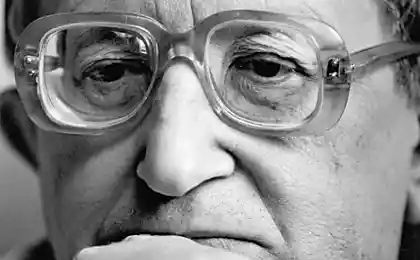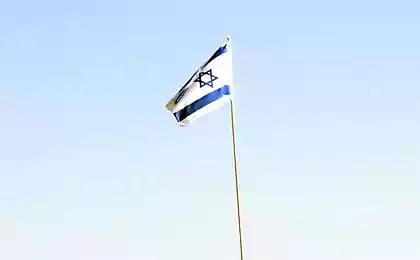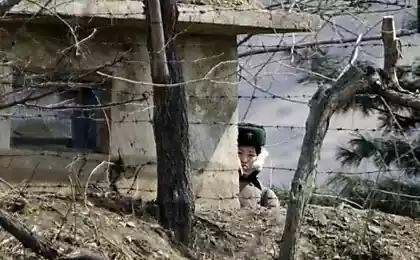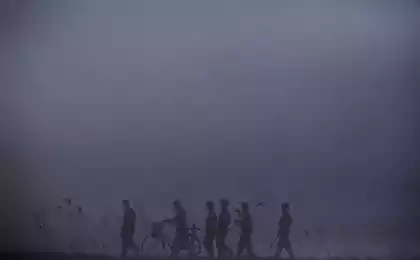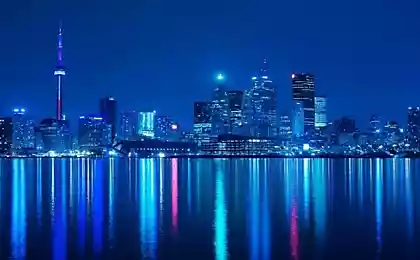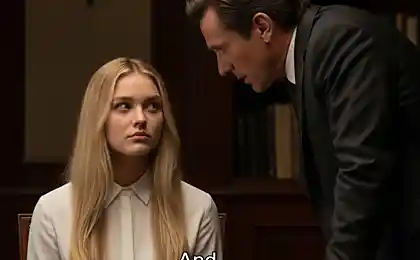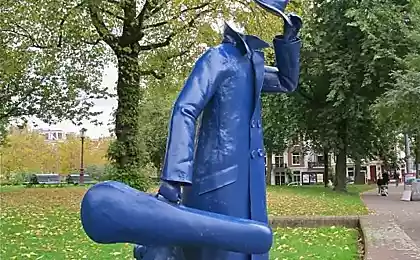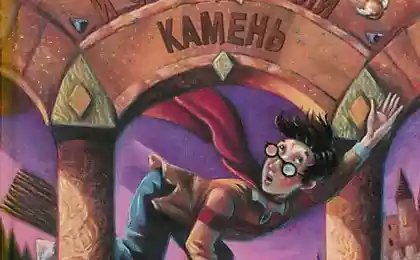1577
Cities - Utopia (13 photos)
Increasing urbanization in the first world and caused a reverse process - the desire of large groups of people to move back to nature, as well as the creation of "specialized" and "ideal" cities - urbanism without grimacing. Garden City, the city of Plantation, Nazi city, a city for drunks and other utopian city on the list below.
City Octagon, vegetarian utopia
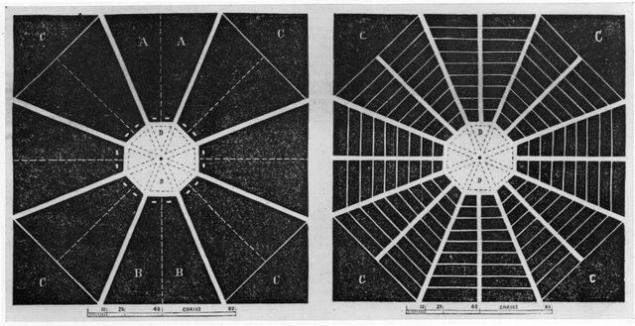
In 1856 in the US Kansas vegetarian organization founded Octagon - a city near Humboldt. The city was designed under the settlement vegetarians. The design of the settlement came under the influence of phrenologist Orson Fowler, according to which the octagons are the most practical form of houses, because they gets the greatest amount of sunlight to enter.
City Plan developed Henry Clubb, a vegetarian and a Puritan (see. City plan above). Also octagonal house in the city was octagonal square and eight roads. The settlement would consist of 4 octagonal villages. All the people lived in their own houses, engaged in agriculture and crafts, leisure and culture in the public buildings. The city vegetarians Octagon arrived 60 families. They waited for a public log house in which they had settled and all. In the spring of 1857 in the Octagon because of the dry winter and wells dried up the river, and then struck the settlers dysentery and fever, including from the deaths. By the end of 1857 the surviving settlers Octagon departed from it.
Auto-city utopia
French-Swiss architect Le Corbusier in the early twentieth century, developed a plan for the ideal city. The architecture of this city, he believed, should be as efficient and simple as industrial machines. He has developed a plan for the two towns utopias: Ville Radieuse and Ville Contemporaine. They both had to have massive skyscrapers, in which millions of people would have lived. Parks and green spaces these massive city divided into zones, industrial and leisure.

Residential buildings were to be the center of social life, with gardens on the roofs and the beach, and on their lower floors located to catering and kindergartens. Le Corbusier calculated that each building will live 2700 people. The work they will take 5 hours per day. Personal vehicles in a city will not, they will replace the development of public transport.
Le Corbusier built only one such house, which was supposed to be the basic unit of his city-utopia - in Marseilles (photo below).
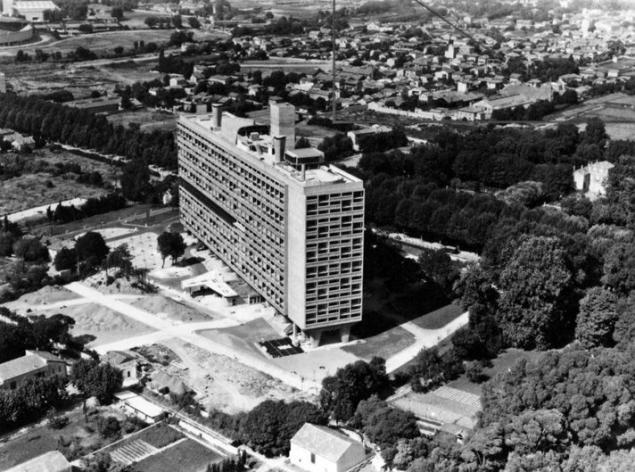
Garden City
In 1902, social reformer Ebenezer Howard published his treatise "The garden-city of the future." He describes the city, which occupies 2,400 acres of land, with houses for 32 thousand people. Residential buildings would occupy only 1,000 acres. The rest of the land in the city would be given to public parks, and farms and wide roads.
Howard was able to partially realize their dreams in the construction of the two towns in England, in the county of Hertfordshire - Welwyn Garden City and Letchworth Garden City (pictured below the current state of the town of Letchworth).

Though Howard never managed to fully realize his utopia, he became the first developer of a residential suburb of the principles (later sold mainly in the US).
Open City
In 1932, the American Frank Lloyd Wright began to develop the idea of an ideal city based on his love for the open, rural prairies of the Midwest. Wright called it "Open City" (as well as "self-sufficient"). Wright wanted in a city there was no industry, and the people there were subsistence farming (on the house was laid 40 hectares of land), doing crafts and culture. As the number of such city was designed for a maximum of 10 thousand people. All public goods (roads, housing, medicine, education, etc.) in such a city would never have been partial, and were in the joint management of all the citizens.
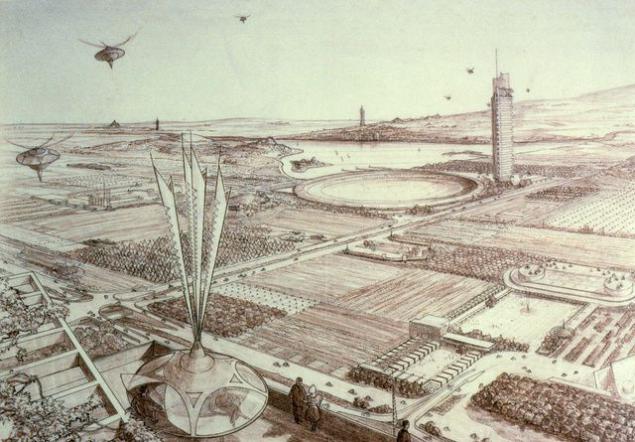
Wright believed that in the future all of America would consist of small towns. They have connected the small aircraft (with flight range of up to 250 km) and high-speed rail transport.
Wright did not manage to realize his utopia.
Nazi-city utopia
The architect Albert Speer was commissioned by Hitler to turn Berlin into a futuristic capital of Nazism. Speer planned to build its massive buildings - both residential and public (for example, the main stadium has a capacity to 400 thousand spectators). The city was to be divided into squares wide roads. It was planned that by the end of the twentieth century there lived to 20 million. People (and the population of Nazi Germany would amount to 200 million. People).
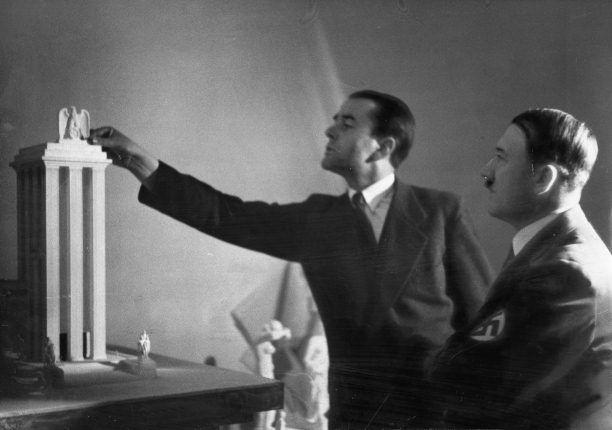
Since the city was located in a swampy area, Speer decided to build one massive building and see what it will shrink. This building still stands today (it is during this time slipped by 18 cm), and it was the only element of life embodied in the Nazi-city utopia (the building in the photo below).
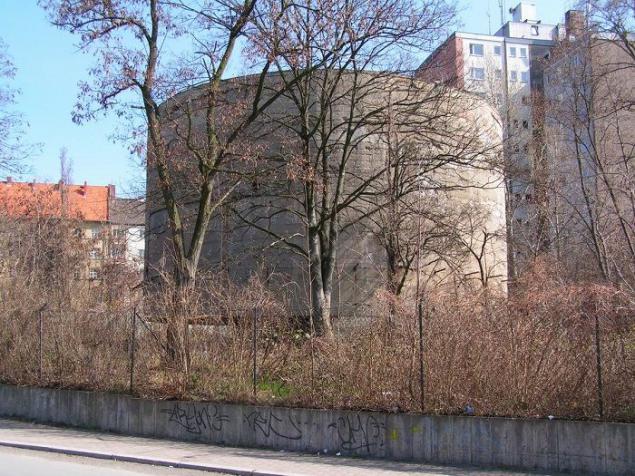
City-utopia Fordlandiya
In 1930, the automobile industrialist Henry Ford bought a piece of land in the Brazilian jungle. There he intended to build a city-utopia behalf of his name - Fordlandiyu.
The main activity of the settlers was to be gevey cultivation and the production of these rubber. Ford perevёz here about 300 workers from the United States. The eccentric millionaire has set strict rules in Fordlandii - the prohibition of alcohol, premarital sex, etc. Workers had to work five days a week, 9 hours. Because there was good free housing, medicine and leisure (library, and watching movies "correct naprvlenie»).
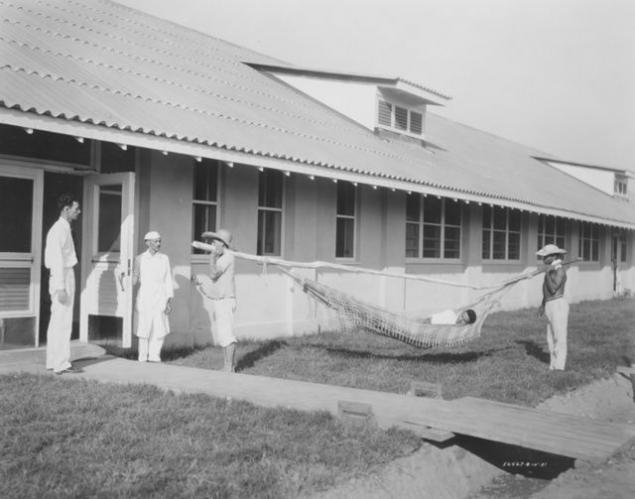
Hard work and strict rules have forced the settlers to revolt against the Ford administration, control the city. The chief warden of the state nravsvennym workers had been killed. Ford gave up, and brought workers from Fordlandii back to the US (in the photo below - Defeated during the uprising of the administration building).
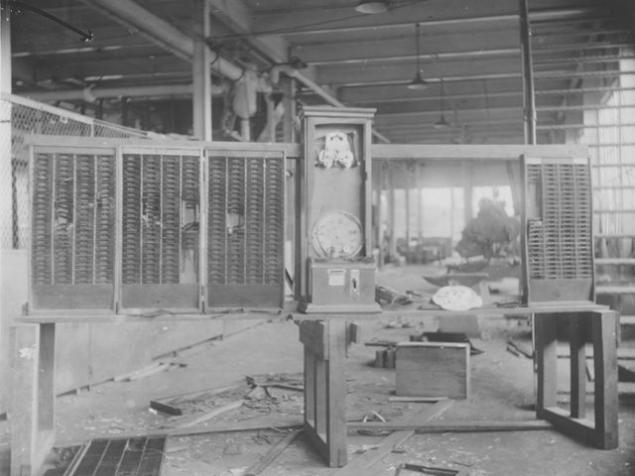
Flying City
In 1950 Buckminster Fuller developed the "floating city." It is interesting that the city intended for the Japanese, and his plan was made on the money of the American occupation group in Japan. It was proposed to relocate people from overpopulated Tokyo.
The energy of such a sphere, each of which would live up to one thousand people, would receive from the sun. Food grown inside it. How's life in the floating city would be like for a stay of astronauts on the station.
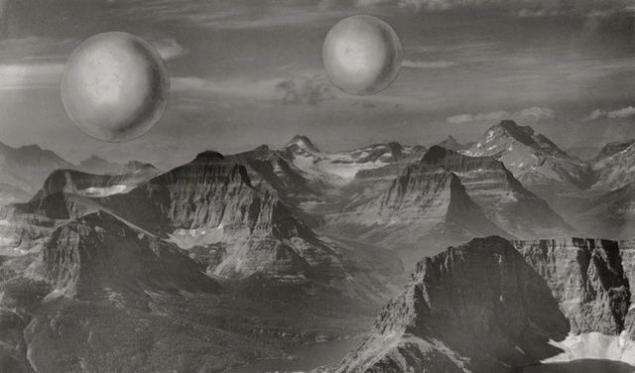
But to the Japanese do not have departed from the country, offered a powerful sphere tie rope to the ground.
Flying the city for the Japanese Americans was never built.
City "Success»
In 1968, the Alaska oil was found. It gave a powerful impetus to the development of the state. Company Tandy Industries Tulsa then developed a plan completely closed city, with climate control - called Seward.
In it it was home to 40 thousand people. Private cars in Seward would be banned, residents would be moved by monorail, trams and self-propelled pavement.

An investor could not build this city, including the fact that he was unable to agree on terms of cooperation with the native tribes living in the area.
City-utopia for drunks
In 1952, Mel Johnson provided investors an ideal city plan - designed to stay in it drunks and alcoholics.
The city would be like a permanent population and the tourists who come here in alkotripy. Children live in a drunken city would be forbidden.

In a drunken city had placed distillery, brewery, and most of the buildings would be of bars, pubs and resorts where drunks slept after a binge. For the convenience of drunks there would be propelled sidewalk.
Johnson was not able to find investors for the town drunk.
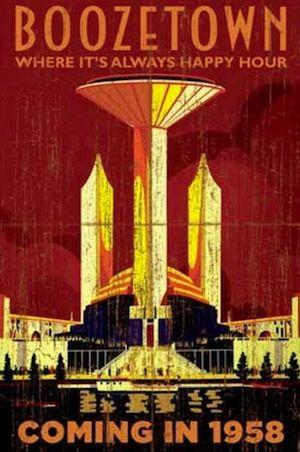
City Octagon, vegetarian utopia

In 1856 in the US Kansas vegetarian organization founded Octagon - a city near Humboldt. The city was designed under the settlement vegetarians. The design of the settlement came under the influence of phrenologist Orson Fowler, according to which the octagons are the most practical form of houses, because they gets the greatest amount of sunlight to enter.
City Plan developed Henry Clubb, a vegetarian and a Puritan (see. City plan above). Also octagonal house in the city was octagonal square and eight roads. The settlement would consist of 4 octagonal villages. All the people lived in their own houses, engaged in agriculture and crafts, leisure and culture in the public buildings. The city vegetarians Octagon arrived 60 families. They waited for a public log house in which they had settled and all. In the spring of 1857 in the Octagon because of the dry winter and wells dried up the river, and then struck the settlers dysentery and fever, including from the deaths. By the end of 1857 the surviving settlers Octagon departed from it.
Auto-city utopia
French-Swiss architect Le Corbusier in the early twentieth century, developed a plan for the ideal city. The architecture of this city, he believed, should be as efficient and simple as industrial machines. He has developed a plan for the two towns utopias: Ville Radieuse and Ville Contemporaine. They both had to have massive skyscrapers, in which millions of people would have lived. Parks and green spaces these massive city divided into zones, industrial and leisure.

Residential buildings were to be the center of social life, with gardens on the roofs and the beach, and on their lower floors located to catering and kindergartens. Le Corbusier calculated that each building will live 2700 people. The work they will take 5 hours per day. Personal vehicles in a city will not, they will replace the development of public transport.
Le Corbusier built only one such house, which was supposed to be the basic unit of his city-utopia - in Marseilles (photo below).

Garden City
In 1902, social reformer Ebenezer Howard published his treatise "The garden-city of the future." He describes the city, which occupies 2,400 acres of land, with houses for 32 thousand people. Residential buildings would occupy only 1,000 acres. The rest of the land in the city would be given to public parks, and farms and wide roads.
Howard was able to partially realize their dreams in the construction of the two towns in England, in the county of Hertfordshire - Welwyn Garden City and Letchworth Garden City (pictured below the current state of the town of Letchworth).

Though Howard never managed to fully realize his utopia, he became the first developer of a residential suburb of the principles (later sold mainly in the US).
Open City
In 1932, the American Frank Lloyd Wright began to develop the idea of an ideal city based on his love for the open, rural prairies of the Midwest. Wright called it "Open City" (as well as "self-sufficient"). Wright wanted in a city there was no industry, and the people there were subsistence farming (on the house was laid 40 hectares of land), doing crafts and culture. As the number of such city was designed for a maximum of 10 thousand people. All public goods (roads, housing, medicine, education, etc.) in such a city would never have been partial, and were in the joint management of all the citizens.

Wright believed that in the future all of America would consist of small towns. They have connected the small aircraft (with flight range of up to 250 km) and high-speed rail transport.
Wright did not manage to realize his utopia.
Nazi-city utopia
The architect Albert Speer was commissioned by Hitler to turn Berlin into a futuristic capital of Nazism. Speer planned to build its massive buildings - both residential and public (for example, the main stadium has a capacity to 400 thousand spectators). The city was to be divided into squares wide roads. It was planned that by the end of the twentieth century there lived to 20 million. People (and the population of Nazi Germany would amount to 200 million. People).

Since the city was located in a swampy area, Speer decided to build one massive building and see what it will shrink. This building still stands today (it is during this time slipped by 18 cm), and it was the only element of life embodied in the Nazi-city utopia (the building in the photo below).

City-utopia Fordlandiya
In 1930, the automobile industrialist Henry Ford bought a piece of land in the Brazilian jungle. There he intended to build a city-utopia behalf of his name - Fordlandiyu.
The main activity of the settlers was to be gevey cultivation and the production of these rubber. Ford perevёz here about 300 workers from the United States. The eccentric millionaire has set strict rules in Fordlandii - the prohibition of alcohol, premarital sex, etc. Workers had to work five days a week, 9 hours. Because there was good free housing, medicine and leisure (library, and watching movies "correct naprvlenie»).

Hard work and strict rules have forced the settlers to revolt against the Ford administration, control the city. The chief warden of the state nravsvennym workers had been killed. Ford gave up, and brought workers from Fordlandii back to the US (in the photo below - Defeated during the uprising of the administration building).

Flying City
In 1950 Buckminster Fuller developed the "floating city." It is interesting that the city intended for the Japanese, and his plan was made on the money of the American occupation group in Japan. It was proposed to relocate people from overpopulated Tokyo.
The energy of such a sphere, each of which would live up to one thousand people, would receive from the sun. Food grown inside it. How's life in the floating city would be like for a stay of astronauts on the station.

But to the Japanese do not have departed from the country, offered a powerful sphere tie rope to the ground.
Flying the city for the Japanese Americans was never built.
City "Success»
In 1968, the Alaska oil was found. It gave a powerful impetus to the development of the state. Company Tandy Industries Tulsa then developed a plan completely closed city, with climate control - called Seward.
In it it was home to 40 thousand people. Private cars in Seward would be banned, residents would be moved by monorail, trams and self-propelled pavement.

An investor could not build this city, including the fact that he was unable to agree on terms of cooperation with the native tribes living in the area.
City-utopia for drunks
In 1952, Mel Johnson provided investors an ideal city plan - designed to stay in it drunks and alcoholics.
The city would be like a permanent population and the tourists who come here in alkotripy. Children live in a drunken city would be forbidden.

In a drunken city had placed distillery, brewery, and most of the buildings would be of bars, pubs and resorts where drunks slept after a binge. For the convenience of drunks there would be propelled sidewalk.
Johnson was not able to find investors for the town drunk.







